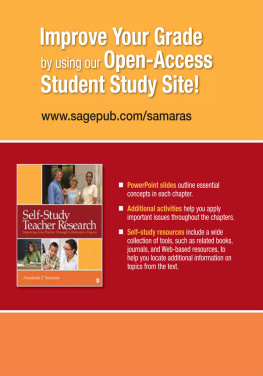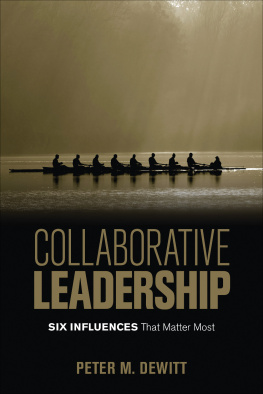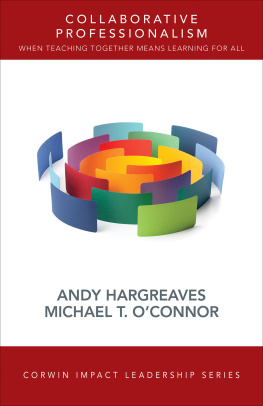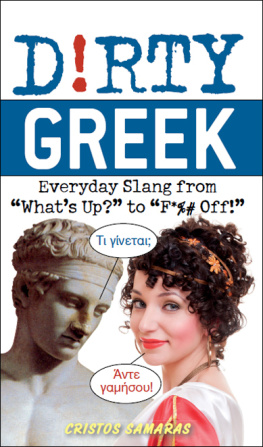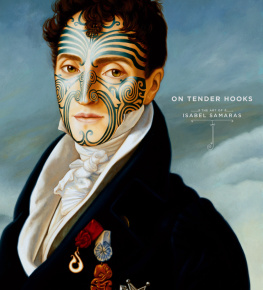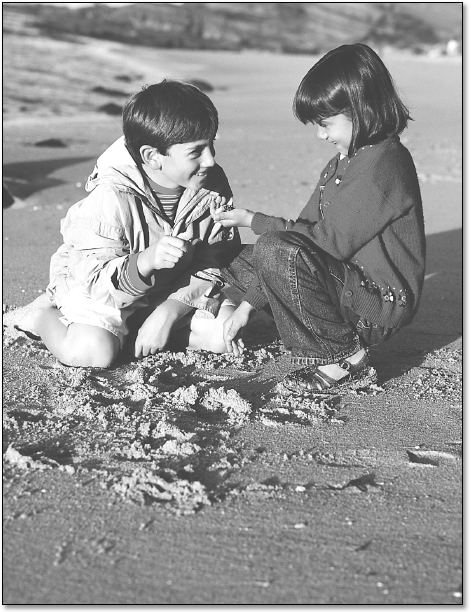Self-Study
Teacher Research
This book is dedicated to all my family and especially to our newest members, Theodore, Lucia, and Rohan, to my dear sisters Irene and Alexandra and to those who have been like sisters to me, and to my brothers John, Nicos, and Andre. With special thanks to my brother John who paved the way for all six of us as first-generation college graduates with the courage and perseverance of our parents and grandparents.
In Loving Memory of My Mother, Magdalena Theodora Savvas Pantelides
Self-Study
Teacher Research
Improving Your Practice Through Collaborative Inquiry
Anastasia P. Samaras
George Mason University
Copyright 2011 by SAGE Publications, Inc.
All rights reserved. No part of this book may be reproduced or utilized in any form or by any means, electronic or mechanical, including photocopying, recording, or by any information storage and retrieval system, without permission in writing from the publisher.
For information:
 | SAGE Publications, Inc. 2455 Teller Road Thousand Oaks, California 91320 E-mail: | SAGE Publications India Pvt. Ltd. B 1/I 1 Mohan Cooperative Industrial Area Mathura Road, New Delhi 110 044 India |
| SAGE Publications Ltd. 1 Olivers Yard 55 City Road, London EC1Y 1SP United Kingdom | SAGE Publications Asia-Pacific Pte. Ltd. 33 Pekin Street #02-01 Far East Square Singapore 048763 |
Printed in the United States of America
Library of Congress Cataloging-in-Publication Data
Samaras, Anastasia P. (Anastasia Pantelides), 1950-
Self-study teacher research: improving your practice through collaborative inquiry/Anastasia Samaras.
p. cm.
Includes bibliographical references and index.
ISBN 978-1-4129-7207-9 (pbk.)
1. Action research in education. 2. TeachersTraining of. 3. Group work in education. I. Title.
| LB1028.24.S36 2011 |
| 370.711dc22 | 2009047312 |
This book is printed on acid-free paper.
10 11 12 13 14 10 9 8 7 6 5 4 3 2 1
| Acquisitions Editor: | Diane McDaniel |
| Editorial Assistant: | Ashley Conlon |
| Production Editor: | Brittany Bauhaus |
| Copy Editor: | Melinda Masson |
| Typesetter: | C&M Digitals (P) Ltd. |
| Proofreader: | Sally Jaskold |
| Indexer: | Holly Day |
| Cover Designer: | Candice Harman |
| Marketing Manager: | Dory Schrader |
Brief Contents
Detailed Contents
A PREFACE WORTH READING
I see this task now as motivating. I am getting my hands dirty learning, playing, and transforming who I am. I was so afraid of making mistakes. Now I am afraid if I dont try enough.
Diana P. Ortiz (2008),
Doctoral Candidate, George Mason University
Photo 0.1 Get Your Hands Dirty
GET YOUR HANDS DIRTY!
Many years ago I taught preschoolers and observed how much they learned by getting their hands dirty. My advanced studies involved learning about early childhood education, human development, curriculum and instruction, and teacher education. I find myself smiling when I reminisce on teaching young children. I watched 3-year-olds energetically fill their paper cups of dirt, carefully plant their seeds, happily water and talk to their sprouting plants, and eagerly watch their plants grow over time. They also enthusiastically dug their hands into finger paint, shaving cream, clay, and mud as they played with and shared their ideas with classmates. With busy hands, they traced and painted, designed and cut, and placed and glued fabric, yarn, and buttons on their self-portraits, which were posted in hallways and on home refrigerators. With excitement, they shared the castles they designed in the outside sandbox and the chalk art they sketched on school sidewalks.
I also observed my own three children tirelessly constructing new designs in the makeshift sandbox where our deck was planned. As children, we relish getting our hands dirty in order to explore and learn. And then we grow up. As we get older, we often forget how much we learned by playing with our ideas and sharing those ideas with colleagues of muddying up our hands, making mistakes, and enjoying the process of learning and coming to know the world through our engagement in it.
I would like to begin this writing by inviting you to get your hands dirty. Come into my university classroom where I teach people just like you who want to learn about self-study teacher research and how to use it in their classrooms. Dig in and join us in the doing of self-study research!
Imagine for a moment you are sitting in our classroom filled with people just like you who are curious about their teaching. You may be a student taking a teacher education course at a community college, a beginning teacher in a college program, or a graduate student completing a capstone teacher research course. You may be completing your internship or student teaching experience and working with a mentor. You may be a preservice or an inservice teacher; a teacher relatively new to the profession or a veteran; or an early childhood, elementary, or secondary school teacher. Regardless of your experience, expertise, teaching context, and discipline, Ill take you through a beginning activity that will introduce you to the self-study research methodology. The activity is an inquiry that applies to you wherever you are in your program of studies or teaching career. Youll be invited to partake in various self-study activities throughout the book because it will give you practice. The inquiries with colleagues are designed to help you build your research projectyour castle in the sand. So lets start doing self-study while were talking about how to do it.
BOOK OVERVIEW
This book is responding to the burgeoning interest of teachers seeking a guide to conduct self-study research and teacher educators searching for a textbook to more comprehensibly and systematically teach it. Zeichner (1999) wrote that the birth of the self-study in teacher education movement around 1990 has been probably the single most significant development ever in the field of teacher education research (p. 8). Self-study research has come of age, and an accessible and comprehensive textbook is greatly needed. You will be introduced to the Self-Study School: its foundations, its culture, and the community of teacher educators who seeded and developed it to be one of the most productive special interest groups, Self-Study of Teacher Education Practices (S-STEP) of the American Educational Research Association (AERA).

